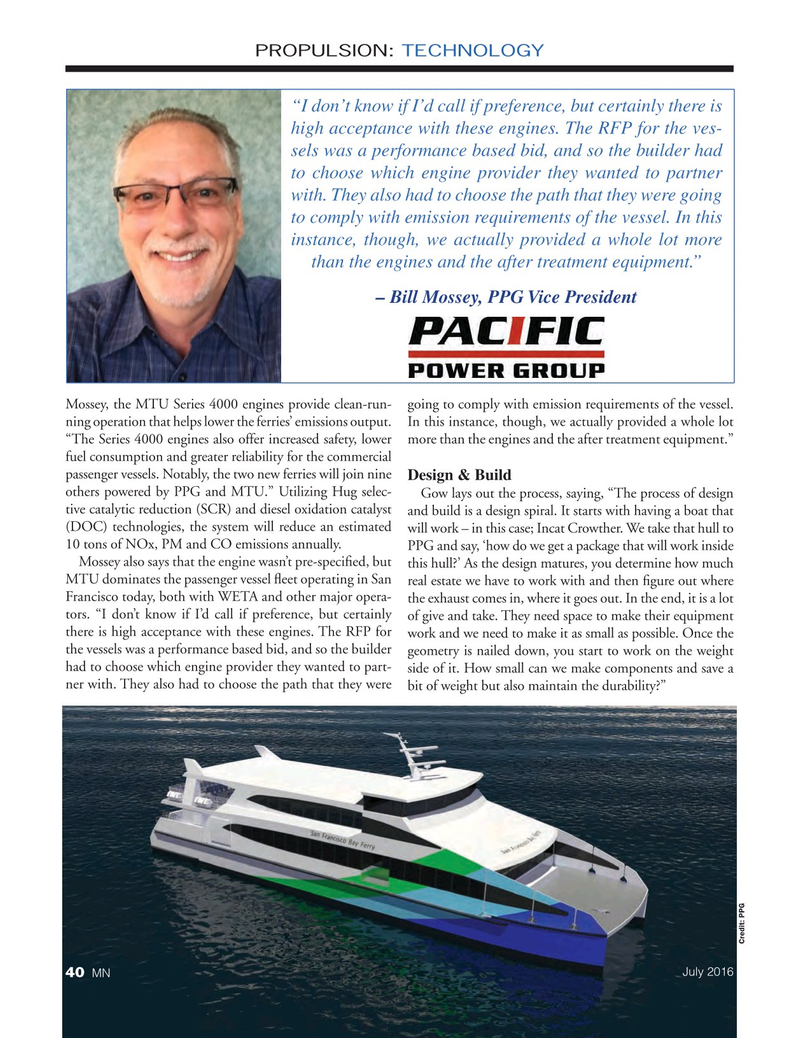
Page 40: of Marine News Magazine (July 2016)
Propulsion Technology
Read this page in Pdf, Flash or Html5 edition of July 2016 Marine News Magazine
PROPULSION: TECHNOLOGY “I don’t know if I’d call if preference, but certainly there is high acceptance with these engines. The RFP for the ves- sels was a performance based bid, and so the builder had to choose which engine provider they wanted to partner with. They also had to choose the path that they were going to comply with emission requirements of the vessel. In this instance, though, we actually provided a whole lot more than the engines and the after treatment equipment.” – Bill Mossey, PPG Vice President
Mossey, the MTU Series 4000 engines provide clean-run- going to comply with emission requirements of the vessel. ning operation that helps lower the ferries’ emissions output. In this instance, though, we actually provided a whole lot “The Series 4000 engines also offer increased safety, lower more than the engines and the after treatment equipment.” fuel consumption and greater reliability for the commercial passenger vessels. Notably, the two new ferries will join nine
Design & Build others powered by PPG and MTU.” Utilizing Hug selec-
Gow lays out the process, saying, “The process of design tive catalytic reduction (SCR) and diesel oxidation catalyst and build is a design spiral. It starts with having a boat that (DOC) technologies, the system will reduce an estimated will work – in this case; Incat Crowther. We take that hull to 10 tons of NOx, PM and CO emissions annually.
PPG and say, ‘how do we get a package that will work inside
Mossey also says that the engine wasn’t pre-speci? ed, but this hull?’ As the design matures, you determine how much
MTU dominates the passenger vessel ? eet operating in San real estate we have to work with and then ? gure out where
Francisco today, both with WETA and other major opera- the exhaust comes in, where it goes out. In the end, it is a lot tors. “I don’t know if I’d call if preference, but certainly of give and take. They need space to make their equipment there is high acceptance with these engines. The RFP for work and we need to make it as small as possible. Once the the vessels was a performance based bid, and so the builder geometry is nailed down, you start to work on the weight had to choose which engine provider they wanted to part- side of it. How small can we make components and save a ner with. They also had to choose the path that they were bit of weight but also maintain the durability?”
Credit: PPG
July 2016
MN 40
MN July16 Layout 32-49.indd 40 6/20/2016 4:13:51 PM

 39
39

 41
41
